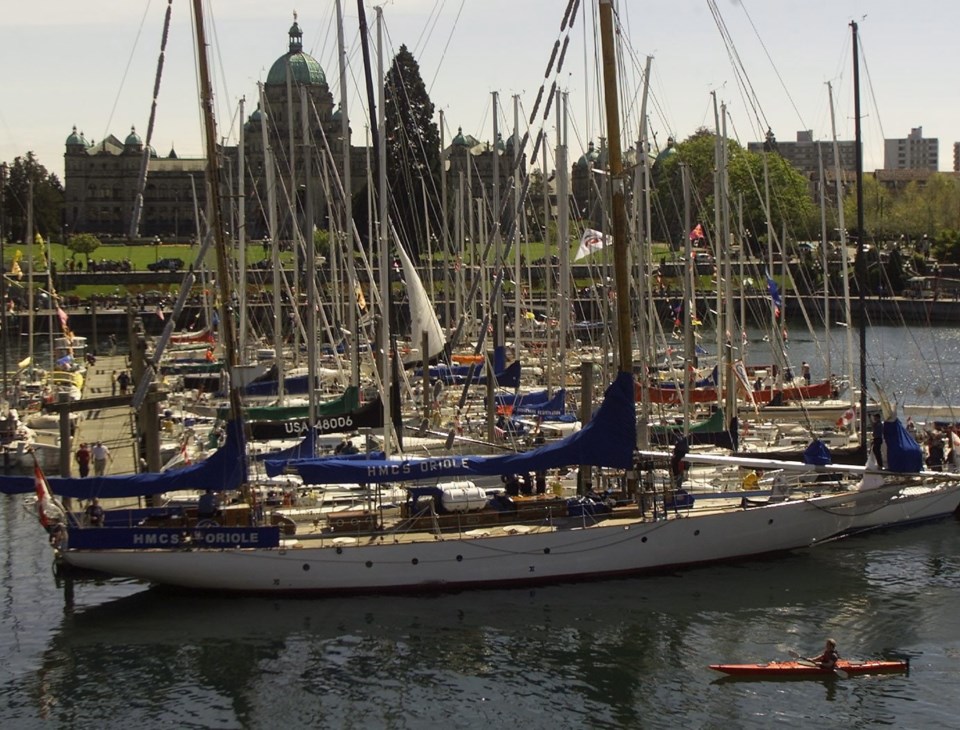Losing tall ship HMCS Oriole to the Atlantic coast would be a blow to B.C., says the executive director of the Maritime Museum of B.C.
“It will be a significant loss to the residents of British Columbia and the Greater Victoria region to lose HMCS Oriole,” said David Leverton in a statement. “Every time we lose part of our West Coast marine heritage, we lose part of our Western Canadian identity.”
The vessel is undergoing repairs in Lunenberg, N.S., and the navy has said it’s not certain whether the ship will return to B.C. She sailed to the Atlantic coast this year to take part in Canada 150 celebrations.
Oriole is a 31-metre ketch with a mainmast height of 29 metres. With a keel laid down in 1920 at a Toronto boatyard, she is the oldest serving ship in the Royal Canadian Navy.
Since 1954, the ship’s home berth has been CFB Esquimalt, where she has been used to train junior officers in the ways of wind and waves.
With such a long residency in Victoria, HMCS Oriole has become a part of the local sailing and maritime community. She opens the recreational sailing season every spring, stars in the annual Sea of Lights event in Cadboro Bay and is a key feature of Swiftsure weekend.
“Many Victorians have grown up with the vessel [Oriole] and recognize it as an important part of West Coast naval history,” Leverton said.
Should the navy decide to leave Oriole on the Atlantic coast, Leverton said he hopes they can bring her back for 2020. That would allow Oriole to celebrate her 100th birthday and get ready for 2021, the 150th anniversary of British Columbia’s joining Confederation as the sixth province of Canada.
“That should be an important consideration after being part of our West Coast history for over 50 years,” Leverton said.



